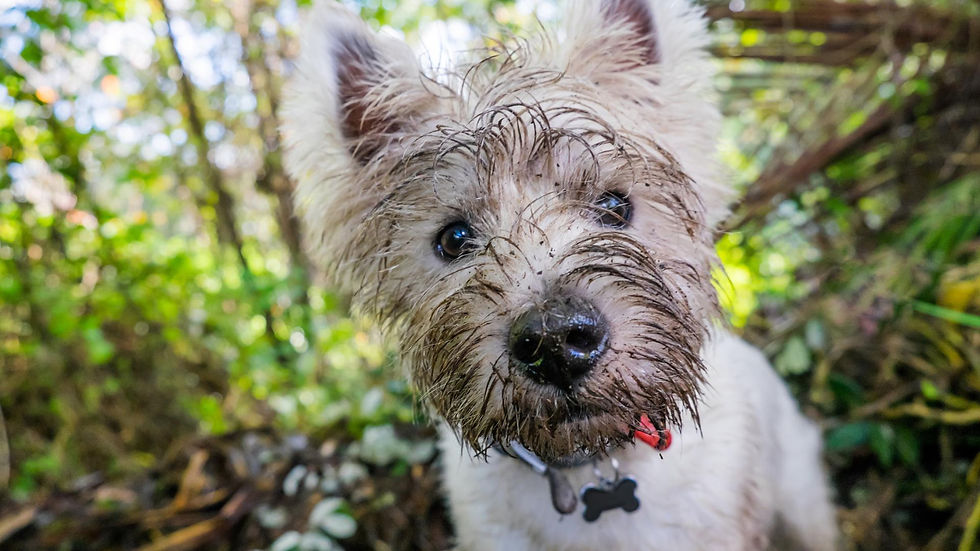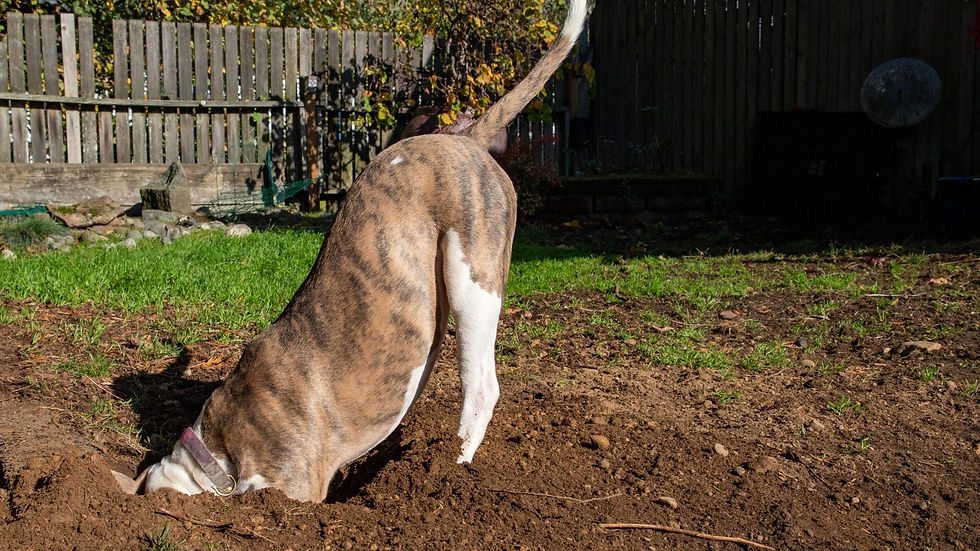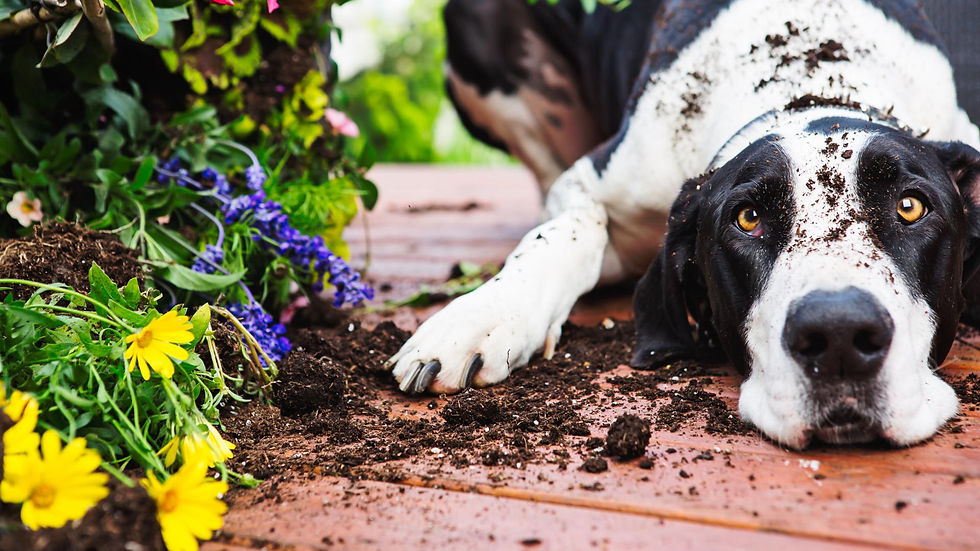Tips to Tackle Your Dog's Digging Habit
- Jacynta Donald
- Jul 9, 2024
- 3 min read
Updated: Jul 10, 2024
Dogs love to dig, whether it's to bury a bone, hunt for critters, or create a cool spot to rest. While digging is a natural and enjoyable behavior for dogs, it can be frustrating for owners. Learn how to manage and redirect your dog's digging instincts to keep both your garden and your furry friend happy.


Why dogs dig?
Because it’s fun! Dogs love to bury or recover bones, dig out prey like mice and rats, or make a nice cooling pit when the weather is warm. Another reason dogs dig? Too much time spent alone in the yard.

It’s not a behaviour problem
Digging is normal canine behaviour and, again, thoroughly enjoyable for the dog. If you have a digger on your hands, give him a place to indulge his hobby.
Steps on what to do:
Step 1: Break the habit. Is your dog digging in all the wrong places? If so, prevent his access. Your dog won’t learn new ways while he has free access to his old digs—digging is just too much fun! Prevention is better still, and easier. If your dog has yet to dig up the roses, don’t wait for him to discover how much fun it is. Teach him where to dig from day one.
Step 2. Supervise. Early on, don’t use the yard for alone-time. Give your dog ample time to learn where he is allowed to dig before you leave him out there unsupervised. Otherwise it is too easy for him to make mistakes. (If you need to leave your dog alone, use his confinement area in the house. Give him plenty of chew toys for company).
Step 3. Create a digging area. Make a dig pit or use a large pot with loose potting soil. A dig pit can be a sandbox or a 3-by-6 foot area in your yard. Loosen about 2 feet of earth, and remove any nails or wire or such. A little sand mixed in helps drainage when it rains. Then: Let your dog see you barely hide a Kong or Nylabone or some other treasure. Encourage him to find the toy and praise him when he does. Gradually cover the toys with more dirt every time. Keep praising. Every now and then hide something new and exciting to keep your dog coming back for more.
Step 4. Interrupt mistakes. Calmly stop any un-authorised digging, then lead your dog to his dig pit or digging pot. And yes, this means you need to be around when your dog is playing outside—at least until he knows where it is okay to dig and where it isn’t.
Step 5: Consistency is key. Reinforce positive digging behaviors consistently. Reward your dog with praise and treats when he uses his designated digging area. Over time, he'll learn that digging there is rewarding and satisfying.
Training Tip:

If your dog has developed a liking for a particular spot in your yard, block access to that spot until he has had time to form new and better habits. Digging is often a symptom of boredom—too much time spent in the yard alone. Make sure your dog is getting enough exercise and interaction.
By understanding why dogs dig and providing them with appropriate outlets for this natural behaviour, you can create a harmonious environment for both your pet and your garden.
Remember, patience and consistency are key. With a bit of training and supervision, you can help your dog channel their digging instincts in a positive way, ensuring everyone enjoys their time outdoors.






